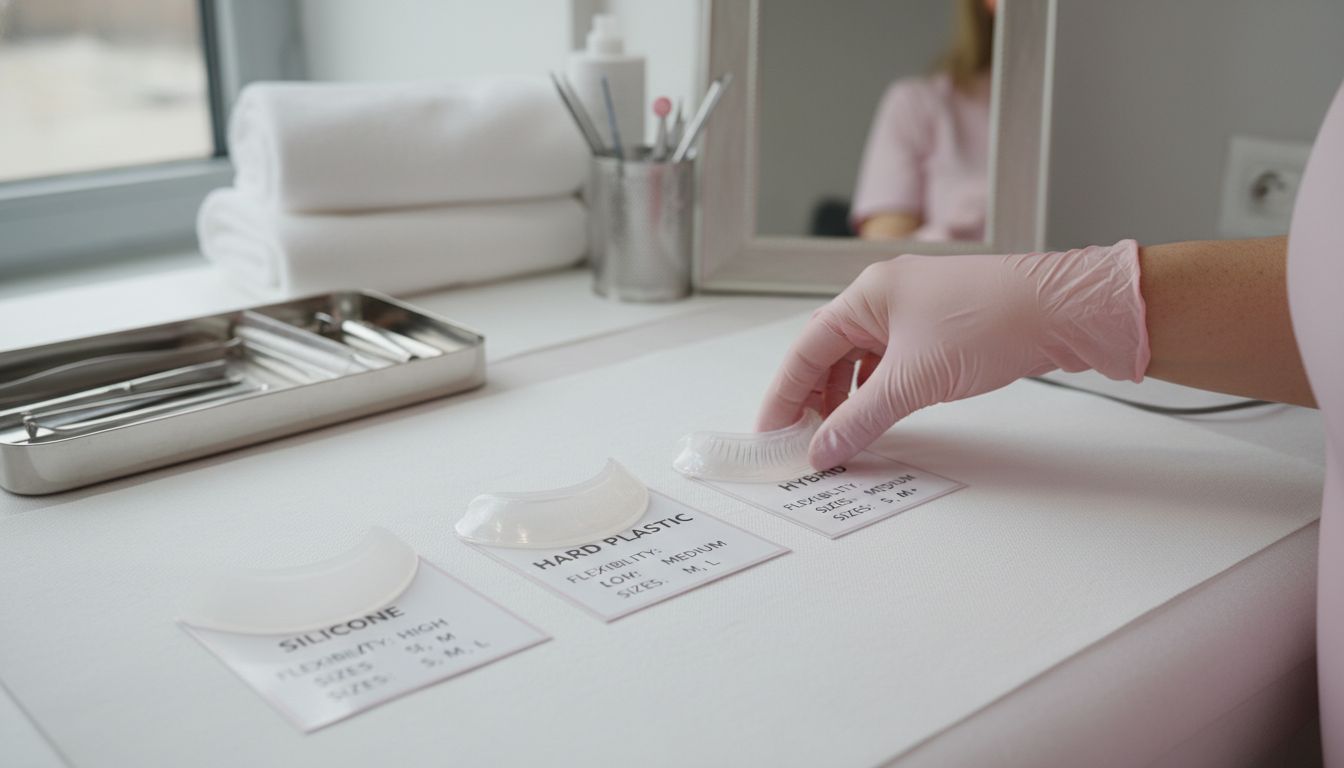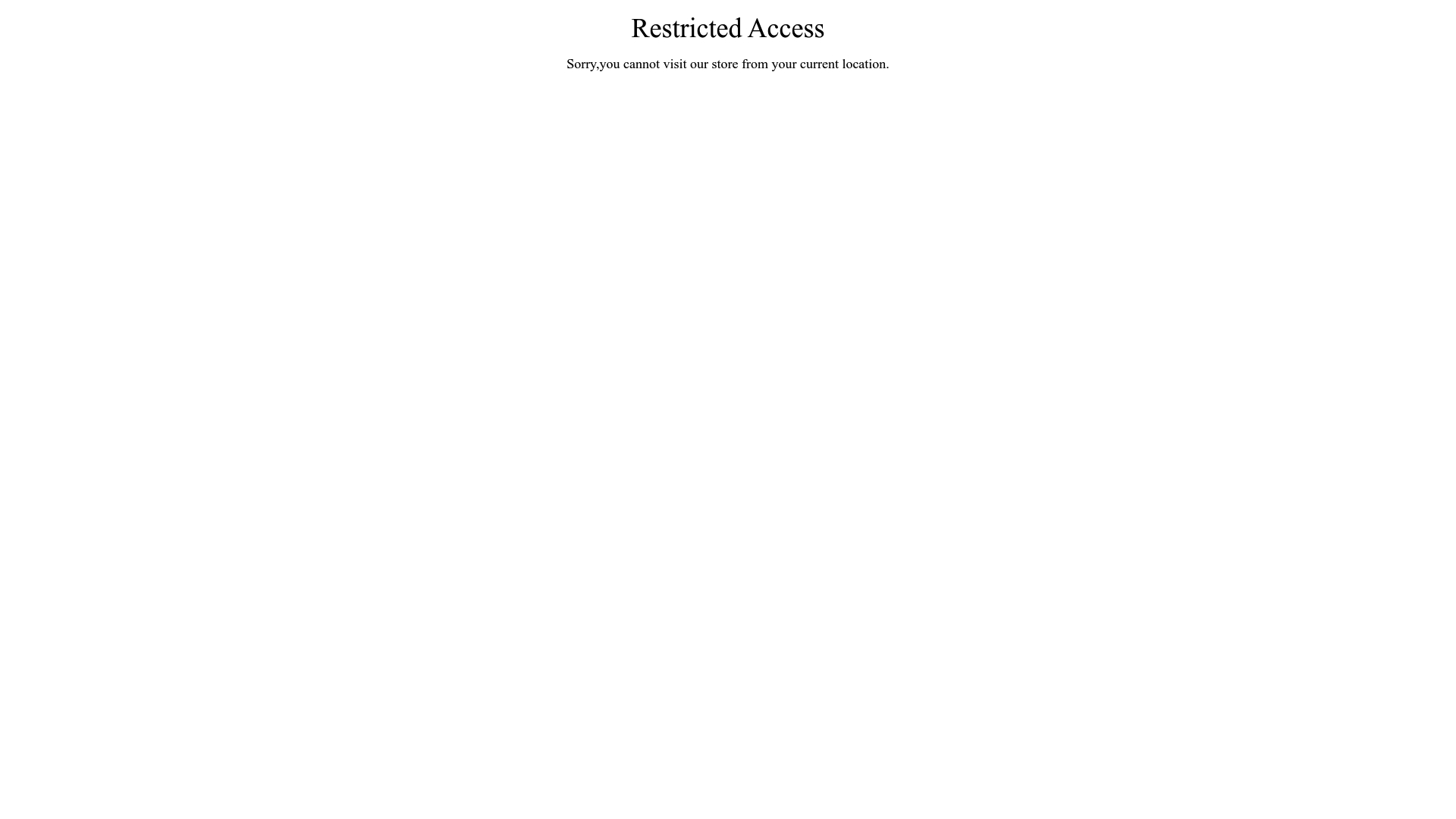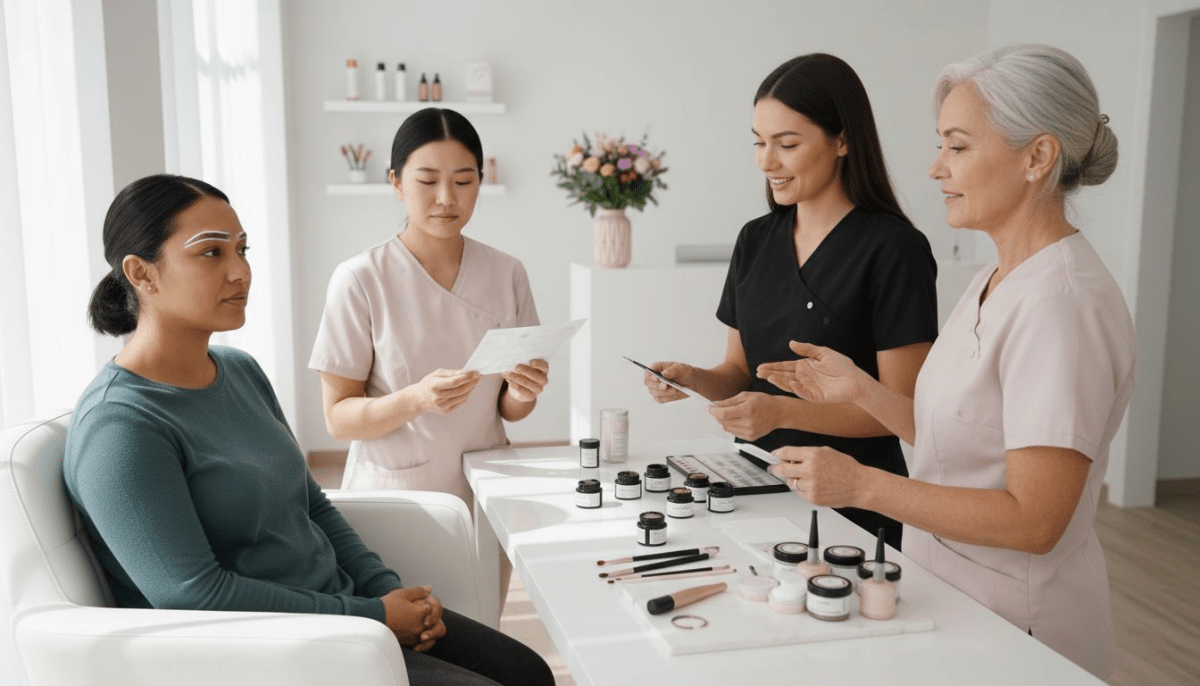Lash Lift Shields Explained: Types, Uses, and Safety
Most lash lifts succeed or fail based on the tools used, and the humble lash lift shield holds the spotlight for a reason. These small devices are the secret behind that flawless eyelash curl you keep seeing on social feeds. With over 85 percent of professional lash artists naming shields as the most critical part of the process, learning what they are and how they work opens up the world of reliable, damage-free lash enhancements.
Table of Contents
- What Are Lash Lift Shields? Essential Definition
- Types of Lash Lift Shields and Key Differences
- How Lash Lift Shields Work in Salon Treatments
- Selecting the Right Shield Size and Shape
- Common Mistakes and Safety Precautions
- Comparing Lash Lift Shields vs. Rods
Key Takeaways
| Point | Details |
|---|---|
| Lash Lift Shields | Specialized tools made of silicone or plastic that ensure precise lifting and curling of natural lashes. |
| Types and Selection | Shields come in various sizes and curvatures, tailored to individual eye shapes and desired curl intensity for optimal results. |
| Application Process | The correct technique involving proper shield placement and the use of lifting solutions is crucial for achieving long-lasting, damage-free results. |
| Safety Precautions | Attention to detail during the procedure is essential to avoid common mistakes and ensure client safety and satisfaction post-treatment. |
What Are Lash Lift Shields? Essential Definition
Lash lift shields are specialized silicone or plastic tools designed specifically for lash lift procedures, serving as the foundational element for creating beautifully lifted, curled eyelashes. These precision-engineered tools come in multiple sizes and curvatures, allowing beauty professionals to customize the lash lifting process according to individual eye shapes and desired aesthetic results.
At their core, lash lift shields function as a molding surface that helps position and shape natural lashes during cosmetic treatments. Unlike traditional methods that relied on manual shaping, these shields provide a consistent, controlled platform for lifting lashes from their root. They work by gently pressing and holding lashes against a curved surface, which creates a uniform upward lift and curl effect without causing damage to the delicate eye area.
The primary components of lash lift shields typically include:
- Different curvature options (mild, medium, dramatic)
- Multiple size ranges to accommodate various eye shapes
- Soft, flexible silicone or medical-grade plastic materials
- Smooth surfaces designed to prevent lash breakage
- Ergonomic designs that support precise application
Professional estheticians appreciate lash lift shields for their versatility and precision. Lash Lift Explained: Benefits, Process, and Care highlights that these tools have revolutionized how professionals approach lash enhancement, providing a more controlled and consistent method compared to traditional manual techniques. The shields essentially act as a template, ensuring each lash is positioned perfectly for maximum lifting and curling effect.
When selecting lash lift shields, beauty professionals consider factors like client eye shape, natural lash length, and desired curl intensity. The right shield can transform sparse or straight lashes into a dramatically lifted, eye-opening look that enhances facial features without the need for extensions or heavy makeup.
Types of Lash Lift Shields and Key Differences
Lash lift shields come in a diverse range of types, each designed to accommodate different aesthetic goals and eye shapes. The primary classifications include silicone, plastic, and hybrid shields, with variations in curvature, size, and flexibility that dramatically impact the final lash appearance. Professional estheticians typically categorize these shields based on their specific characteristics and intended lifting effect.
The most common shield types are:
- Silicone Shields: Soft, flexible, and adaptable to multiple eye shapes
- Hard Plastic Shields: Rigid and provide more dramatic, structured curl
- Hybrid Shields: Combining silicone’s flexibility with plastic’s structural support
- Size-Specific Shields: Small, medium, and large options for different eye configurations
Each shield type offers unique advantages for lash manipulation. Silicone shields, for instance, provide gentler lifting with minimal tension, making them ideal for clients with sensitive or fragile lashes. Hard plastic shields create more pronounced curls and work exceptionally well for individuals with straight, resistant lashes that require more intensive shaping.
Lash Lift Process Explained: Step-by-Step Expert Guide emphasizes that professional selection of shields depends on multiple factors including natural lash texture, desired curl intensity, and individual eye geometry. Experienced technicians often maintain a varied shield collection to customize treatments for each unique client.
Professionals also consider additional nuanced differences between shield types. Some shields feature textured surfaces for enhanced grip, while others have specialized edge designs that minimize potential lash damage. The thickness and flexibility of the shield material can significantly influence the lifting process, with thinner shields allowing more precise lash positioning and thicker shields providing more structural support during treatment.

How Lash Lift Shields Work in Salon Treatments
Lash lift shields are precision instruments that transform the lash enhancement process in professional salon treatments. These specialized tools serve as the foundational structural support for creating lifted, curled lashes by strategically positioning natural lashes against a carefully designed curved surface. The process involves meticulously placing the shield directly on the eyelid, then carefully adhering the client’s natural lashes to the shield’s contoured shape.
The technical application of lash lift shields involves several critical steps:
- Cleaning and preparing the natural lashes
- Selecting the appropriate shield size and curvature
- Applying a gentle adhesive to secure lashes to the shield
- Positioning lashes precisely against the shield’s curve
- Applying lifting solutions to set the new lash shape
Professional estheticians understand that shield selection dramatically impacts treatment outcomes. Softer silicone shields provide a more natural lift, while harder plastic shields create more dramatic, structured curls. The shield’s unique curvature determines the final lash appearance, allowing technicians to customize the treatment to individual client preferences and natural lash characteristics.
Professional Lash Lift Steps for Salon-Quality Results highlights the intricate process of shield application, emphasizing that proper technique is crucial for achieving consistent, long-lasting results. Experienced professionals carefully assess factors like lash length, eye shape, and client desired outcome when selecting and positioning shields.
During the treatment, shields act as a protective mold that gently lifts lashes from their root, creating a uniform upward curl. The process involves applying specialized perming solutions and setting solutions that restructure the lash’s natural keratin bonds, essentially “training” the lashes to maintain their new lifted position. This method provides a semi-permanent solution that can last several weeks, offering clients a low-maintenance alternative to daily lash curling and mascara application.
Selecting the Right Shield Size and Shape
Shield selection represents one of the most critical decisions in achieving optimal lash lift results, requiring careful consideration of multiple anatomical and aesthetic factors. Professional estheticians recognize that no single shield works universally, as individual eye shapes, lash lengths, and desired curl intensities demand precise customization. The right shield can transform sparse or straight lashes into a dramatically lifted, eye-opening look that enhances natural facial features.
Key considerations for shield selection include:
- Eye shape (almond, round, hooded, deep-set)
- Natural lash length and thickness
- Desired curl intensity (soft, medium, dramatic)
- Client’s comfort and sensitivity levels
- Specific aesthetic goals
Shield curvature plays a pivotal role in determining the final lash appearance. Smaller, more pronounced curves create intense lifts suitable for clients with straight, resistant lashes, while gentler, wider curves produce more natural, soft elevations. Lash shield dimensions typically range from 8mm to 12mm, with each size offering unique lifting characteristics that can dramatically transform a client’s eye aesthetic.
7 Essential Lash Lift Tips Every Beauty Pro Should Know emphasizes the importance of matching shield characteristics to individual client needs. Experienced technicians often maintain a comprehensive shield collection, allowing them to seamlessly adapt treatments to each unique eye structure and client preference.
Professional estheticians develop an intuitive understanding of shield selection through extensive practice and client interaction. Factors like skin sensitivity, natural lash health, and personal style all influence the optimal shield choice. A meticulously selected shield not only enhances lash appearance but also ensures client comfort and satisfaction, transforming a standard beauty treatment into a personalized aesthetic experience.
Common Mistakes and Safety Precautions
Lash lift shield procedures involve intricate techniques that demand precision and careful attention to prevent potential complications. Professional estheticians must navigate a complex landscape of technical challenges and client safety considerations, understanding that even minor errors can lead to significant risks such as lash damage, skin irritation, or unexpected aesthetic outcomes.
Common mistakes to avoid during lash lift shield treatments include:
- Improper shield sizing and placement
- Using excessive adhesive
- Neglecting patch testing for chemical sensitivities
- Applying lifting solutions incorrectly
- Failing to protect the delicate eye area
- Rushing through the application process
- Using expired or contaminated products
The most critical safety precautions revolve around preparation and technique. Technicians must thoroughly cleanse the eye area, ensure complete makeup and oil removal, and conduct comprehensive client consultations to identify potential contraindications. Patch testing becomes crucial, especially for clients with sensitive skin or previous allergic reactions to cosmetic treatments.
Professional Lash Lifts Explained: Key Benefits and Process underscores the importance of maintaining strict hygiene protocols and using high-quality, professional-grade products. Professionals should always work with clean tools, perform meticulous skin assessments, and maintain a sterile treatment environment to minimize potential risks.
Client safety extends beyond the immediate treatment. Aftercare instructions are paramount, including avoiding moisture, steam, and mechanical manipulation of lashes for the first 24-48 hours post-treatment. Experienced estheticians provide comprehensive guidance on maintaining lifted lashes, monitoring for any adverse reactions, and understanding when to seek professional medical attention if unexpected complications arise.
Comparing Lash Lift Shields vs. Rods
Lash lift tools represent two distinct approaches to creating lifted, curled lashes, each with unique characteristics that cater to different aesthetic goals and client preferences. Professional estheticians must understand the nuanced differences between shields and rods to deliver precise, customized lash enhancement treatments that meet individual client needs.
Key differences between shields and rods include:
- Curl intensity and shape
- Lash positioning techniques
- Suitability for different eye shapes
- Lifting angle and root elevation
- Complexity of application
- Recommended client profiles
Beautiful Brows and Lashes highlights a critical distinction in curl types: shields create an L-shaped curl by providing a direct lift from the root, making them particularly suitable for clients with hooded eyes, while rods produce a more subtle C/D curl preferred by mature clients or those seeking a gentler lash enhancement.
Shields offer more dramatic, structured lifting with broader surface contact, allowing for maximum lash manipulation and a more pronounced curl. Rods, in contrast, provide a softer, more traditional curl that works exceptionally well for clients with naturally straight or slightly downturned lashes. The choice between shields and rods depends on multiple factors, including natural lash texture, eye shape, and the client’s desired aesthetic outcome.

What Is a Lash Lift Kit? Complete Guide for 2024 emphasizes that professional selection requires a nuanced understanding of each tool’s unique properties. Experienced technicians often maintain both shield and rod options, allowing them to customize treatments precisely. The ultimate goal remains consistent: creating a beautifully lifted, natural-looking lash enhancement that complements the client’s individual eye structure and personal style.
Elevate Your Lash Lift Treatments with Professional Shields from Fraustore USA
Mastering the art of lash lifting starts with choosing the right tools that address common challenges like improper shield sizing and client sensitivity. This article emphasized the importance of selecting the perfect lash lift shields to achieve a beautiful, safe, and lasting curl while preventing lash damage or irritation. If you want to avoid typical pitfalls such as uneven lifts or discomfort during treatment, investing in high-quality, versatile shields is essential.
Explore our expert-curated range of Lash Lift Shields & Pads | Pro Silicone Tools USA designed to meet diverse eye shapes and lifting preferences. Each shield in our collection features medical-grade materials, varying curvatures, and sizes tailored for professional precision and client comfort.

Ready to transform your lash lift services and ensure consistent, salon-quality results every time? Visit Fraustore USA today to browse our complete selection of lash lift essentials including Lash Lift Glues & Balms for Professionals. Don’t wait until your clients experience inconsistent outcomes or discomfort. Enhance your toolkit with trusted products designed for success and client safety. Shop now and elevate your lash artistry with confidence!
Frequently Asked Questions
What are lash lift shields?
Lash lift shields are specialized silicone or plastic tools used in lash lift procedures to shape and lift natural lashes, providing a consistent platform for creating beautifully curled eyelashes.
What types of lash lift shields are available?
Lash lift shields come in various types, including silicone, hard plastic, and hybrid shields, each offering different levels of flexibility, curvature, and lifting effects to suit various eye shapes and aesthetics.
How do lash lift shields work during a lash lift treatment?
Lash lift shields are placed directly on the eyelid, where the natural lashes are adhered to the shield’s curved surface. This molds the lashes into a lifted position, allowing the application of perming solutions that set the new shape for a semi-permanent curl.
What are common mistakes to avoid when using lash lift shields?
Common mistakes include improper shield sizing and placement, using excessive adhesive, neglecting patch testing, and applying lifting solutions incorrectly. Attention to detail and proper technique are essential to ensure client safety and optimal results.


